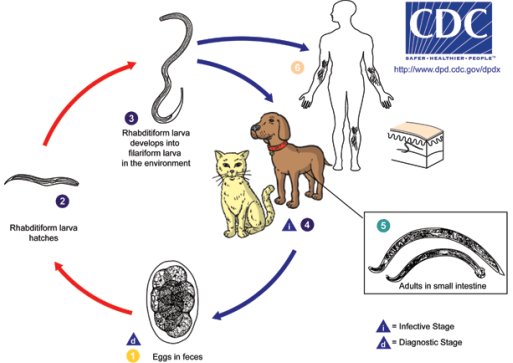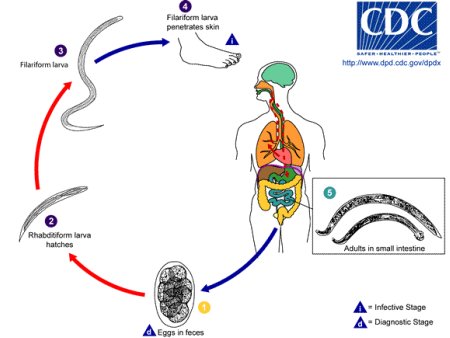|
Facts About Hookworms.Hookworm is an intestinal parasite and it can be transmitted to humans via soil contaminated by cat or dog feces. They are commonly found in shaded, moist, or sandy areas, where they are easily picked up by bare feed or buttocks. This worm attaches to the inside of the intestinal wall of animals, where it will feed on the blood of the host and the animals will excrete its eggs on their feces. Shortly after, the eggs will hatch and the larva can remain on the contaminated soil for several weeks. Once contracted by humans it will cause itching rashes - also called cutaneous larva migrans, or creeping eruptions.
In humans, the rash can take the form of a snake-like tract with blisters which is caused by the hookworm larvae traveling under the skin. In most cases, this worm will not travel to the intestines and will remain beneath the skin. Although, there is a possibility where the hookworm migrates to the human intestine, causing inflammation of the gastrointestinal tract - also called eosinophilic enteritis.
If you have any of the symptoms described above you should consult your family doctor for the proper treatment. Common symptoms in cats include: lesions on the bottoms of the feet and in between the toes, coughing, dark and sandy stool, diarrhea, and constipation. An infected cat with hookworm will also have a pale or unhealthy appearance and will show a poor appetite. Your veterinarian will determine if your cat has hookworms by performing an examination of a stool specimen. Based on your cat's age, weight, and health condition, your Vet will determine the proper treatment. To prevent against such parasites be sure to practice good personal hygiene, deworm your house pets, keep the cat litter clean, and do not allow your kids to play in potentially contaminated environments.
Return from Hookworms to Cat Health
|







